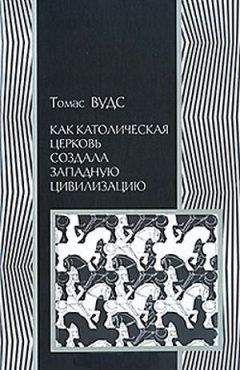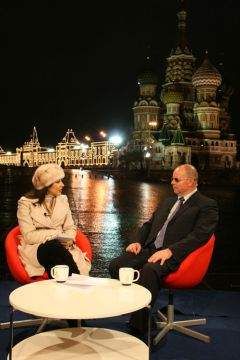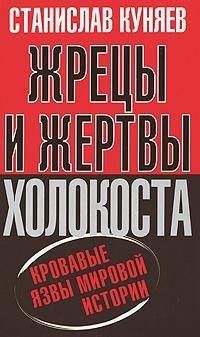32
G. Cyprian Alston, "The Benedictine Order," Catholic Encyclopedia, 2nd ed., 1913.
Alexander Clarence Flick, The Rise of the Mediaeval Church (NewYork: BurtFranklin, 1909), 216.
Ныне Массачусетский университет в Амхерсте (University of Massachusetts Amherst). – Прим. ред.
Henry H. Goodell, "The Influence of the Monks in Agriculture," address delivered before the Massachusetts State Board of Agriculture, August 23, 1901, 22. Copy in the Goodell Papers at the University of Massachusetts.
Flick, 223.
Cm. John Henry Cardinal Newman, Essays and Sketches, vol. 3, Charles Frederick Harrold, ed. (New York: Longmans, Green and Co., 1948), 264–265.
Goodell, "The Influence of the Monks in Agriculture",11.
Ibid., 6.
Charles Montalembert, The Monks of the West: From Saint Benedict to Saint Bernard, vol. 5 (London: Nimmo, 1896), 208.
Goodell, "The Influence of the Monks in Agriculture", 7–8.
Ibid., 8.
Ibid., 8, 9.
Ibid., 10.
Montalembert, 198–199.
John B. O'Connor, Monasticism and Civilization (New York: P. J. Kennedy & Sons, 1921), 35–36.
Jean Gimpel, The Medieval Machine: The Industrial Revolution of the Middle Ages (New York: Holt, Rinehart, and Winston, 1976), 5.
Randall Collins, Weberian Sociological Theory (Cambridge: Cambridge University Press, 1986), 53–54.
Gimpel, 5.
Ibid., 3.
Цит. по: David Luckhurst, "Monastic Watermills", Society for the Protection of Ancient Buildings, no. 8 (London, n.d.), 6; quoted in Gimpel, 5–6.
Gimpel, 67.
Ibid., 68.
Ibid., 1.
Reginald Grégoire, Leo Moulin, and Raymond Oursel, The Monastic Realm (New York: Rizzoli, 1985), 271.
Ibid., 275.
Stanley L. Jaki, "Medieval Creativity in Science and Technology", in Patterns and Principles and Other Essays (Bryn Mawr, Pa.: Intercollegiate Studies Institute, 1995), 81; см. также: Lynn White Jr., "Eilmerof Malmesbury, an Eleventh-Century Aviator: A Case Study of Technological Innovation, Its Context and Tradition", Technology and Culture 2 (1961): 97 – 111.
Joseph MacDonnell, S.J., Jesuit Geometers (St. Louis: Institute of Jesuit Sources, 1989), 21–22.
David Derbyshire, "Henry'Stamped Out Industrial/Revolution'", Telegraph [U. K. I, June 21, 2002; см. также: "Henry's Big Mistake," Discover, February 1999.
Montalembert, 225, 89–90.
Ibid., 227.
Ibid., 227–228. У Монталамбера имя епископа Абсалона написано с ошибкой.
O'Connor, 118.
Montalembert, 151–152.
L. D. Reynolds and N. G. Wilson, Scribes and Scholars: A Guide to the Transmission of Greek and Latin Literature, 3 rd ed. (Oxford: Clarendon Press, 1991), 83.
Ibid., 81–82.
Montalembert, 145.
Ibid., 146; Raymund Webster, "Pope Blessed Victor III", Catholic Encyclopedia, 2nd ed., 1913.
Montalembert, 146. См. об этом также: Newman, 320–321.
Newman, 316–317.
Ibid., 319.
Ibid., 317–319.
Reynolds and Wilson, 109.
Ibid., 109–110.
O'Connor, 115.
Montalembert, 139.
Newman, 321.
Montalembert, 143.
Ibid., 142.
Ibid., 118.
Alston, "The Benedictine Order".
Thomas Cahill, How the Irish Saved Civilization (New York: Doubleday, 1995), 150, 158.
Adolf von Harnack, цит. по: O'Connor, 90.
Flick, 222–223.
См.: Charles Homer Haskins, The Rise of Universities (Ithaca: Cornell University Press, 1957 [1923]), 1; idem, The Renaissance of the Twelfth Century (Cleveland: Meridian, 1957 [1927]), 369; LowrieJ. Daly, The Medieval University, 1200–1400 (New York; Sheed and Ward, 1961), 213–214.
Daly, 4.
Richard С. Dales, The Intellectual Life of Western Europe in the Middle Ages (Washington, D. C: University Press of America, 1980), 208.
«Universities», Catholic Encyclopedia, 1913. Университеты, у которых не было хартий, возникали стихийно по сложившемуся обычаю (ex consuetudine).
Ibid.
Gordon Left, Paris and Oxford Universities in the Thirteenth and Fourteenth Centuries: An Institutional and Intellectual History (New York: John Wiley and Sons, 1968), 18.
Daly, 167.
Joseph H. Lynch, The Medieval Church: A Brief History (London: Longman, 1992), 250.
Daly, 163–164.
Ibid., 22.
А. В. Cobban, The Medieval Universities: Their Development and Organization (London: Methuen& Co., 1975), 82–83.
Daly, 168.
«Universities»; Cobban, 57.
"Universities".
Daly, 202.
Leff, 10.
Ibid., 8–9.
См. классическую работу Haskins, The Renaissance of the Twelfth Century, и его же книгу The Rise of Universities, 4–5.
То, что сегодня называется бакалавриатом и магистратурой. – Прим. ред.
Daly, 132–133.
Ibid., 135.
Ibid., 136.
Edward Grant, God and Reason in the Middle Ages (Cambridge: Cambridge University Press, 2001), 184.
Ibid., 146.
Эта формулировка доказательства Ансельма принадлежит моему покойному другу д-ру Уильяму Mappe (William Marra, ум. 1998). Он много лет преподавал философию в Университете Фордхэма и был одним из немногих философов, считавших, что доказательство бытия Божия св. Ансельмом убедительно.
Цит. по Grant, 60–61.
David C. Lindberg, The Beginnings of Western Science (Chicago: University of Chicago Press, 1992), 196.
О том, что Абеляр не был рационалистом в духе XVIII века, а был верным сыном Католической церкви, см. David Knowles, The Evolution of Medieval Thought, 2nd ed. (London: Longman, 1988), 111ff.
Daly, 105.
См. прекрасную статью: James A. Sadowsky, S. J., "Can There Be an Endless Regress of Causes? " in Philosophy of Religion: A Guide and Anthology, Brian Davies, ed. (New York: Oxford University Press, 2000), 239–242.
Henri Daniel-Rops, Cathedral and Crusade, trans. John Warrington (London: J. M.Dent & Sons, 1957), 311.
Ibid., 308.
Lindberg, 363.
Christopher Dawson, Religion and the Rise of Western Culture (New York: Image Books, 1991 [1950]), 190–191.
Grant, 356.
Ibid., 364.
J. G. Hagen, "Nicolaus Copernicus", Catholic Encyclopedia, 2nd ed., 1913.
Jerome J. Langford, O.P., Galileo, Science and the Church (NewYork: Desclee, 1966), 35.
Joseph MacDonnell, S. J., Jesuit Geometers (St. Louis: Institute of Jesuit Sources, 1989), 19.
Ibid.
Langford, 45, 52.
Параллакс – изменение видимого положения объекта относительно удаленного фона в зависимости от положения наблюдателя. – Прим. ред.
Тихо Браге (1546–1601) предложил астрономическую систему, которая представляла собой нечто среднее между геоцентризмом Птолемея и гелиоцентризмом Коперника. В этой системе все планеты, кроме Земли, вращались вокруг Солнца, а Солнце вращалось вокруг неподвижной Земли.
Ibid., 68–69.
Ср.: Jacques Barzun, From Dawn to Decadence (New York: Harper Collins, 2001), 40; краткий, но качественный обзор этого вопроса см.: H. W. Crocker III, Triumph (Roseville, Calif.: Prima, 2001), 309–311.
James Brodrick, The Life and Work of Blessed Robert Francis Cardinal Bellarmine, S. J., 1542–1621, vol. 2 (London: Burns, Oates and Washbourne, 1928), 359.
James J. Walsh, The Popes and Science (New York: Fordham University Press, 1911), 296–297.
Edward Grant, " Science and Theology in the Middle Ages", in God and Nature: Historical Essays on the Encounter Between Christianity and Science, David C. Lindberg and Ronald L. Numbers, eds. (Berkeley: University of California Press, 1986), 63.
MacDonnell, Appendix 1, 6–7.
J. L. Heilbron, The Sun in the Church: Cathedrals as Solar Observatories (Cambridge: Harvard University Press, 1999), 203.
Zdenek Kopal, "The Contribution of Boscovich to Astronomy and Geodesy", in Roger Joseph Boscovich, S. J., F. R. S., 1711–1787, Lancelot Law Whyte, ed. (New York: Fordham University Press, 1961), 175.
Правильная транскрипция фамилии ученого – Дюан. В данном издании принята традиционно сложившаяся в русской литературе транскрипция. – Прим. ред.
См.: Thomas Е. Woods, Jr., The Church and the Market: A Catholic Defense of the Free Economy (Lanham, Md.: Lexington, 2005), 169–174.
Stanley L. Jaki, Science and Creation: From Eternal Cycles to an Oscillating Universe (Edinburgh: Scottish Academic Press, 1986), 150. «Это соединение разумности Творца с постоянством природы заслуживает упоминания, потому что в зародыше содержит представление об автономности природы и ее законов». Ibid. Ср.: Пс8, 4, 19,3–7, 104,9, 148, 3,6; Иер5, 24, 31,35.
Дэвид Линдберг приводит несколько примеров упоминания этого стиха св. Августином; см. David С. Lindberg, "On the Applicability of Mathematics to Nature: Roger Bacon and His Predecessors", British Journal for the History of Science 15 (1982): 7.





